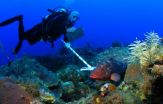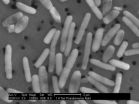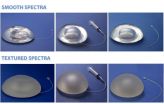(Press-News.org)
VIDEO:
The most common ailment to affect a horse is lameness. A University of Missouri equine veterinarian has developed a system to effectively assess this problem using motion detection....
Click here for more information.
The most common ailment to affect a horse is lameness. A University of Missouri equine veterinarian has developed a system to effectively assess this problem using motion detection. This system has been referred to as "Lameness Locator."
Kevin Keegan, a professor of equine surgery in the College of Veterinary Medicine at MU, has been tracking horse movement related to equine lameness for years. Because equine lameness may begin subtly and can range from a simple mild problem affecting a single limb to a more complicated one affecting multiple limbs, veterinarians and horse owners know that early detection is the key to successful outcomes. The problem, Keegan says, is that detection still relies on simple visual observation with the naked eye.
"We've been developing objective methods of lameness detection and evaluation since the early 1990s as an aid to subjective evaluations," Keegan said. "We started with treadmills and high speed cameras, and those worked pretty well, but they weren't really practical due to high cost and they cannot be used in the field. Plus, horses do not move on a treadmill like they do on regular ground. In some cases with mild lameness, or in cases with multiple limb lameness, even experts looking at the same horse may disagree on whether lameness is present or on its severity. An objective method would be helpful to take some guesswork out of the evaluation."
Working with Frank Pai, a professor in mechanical engineering at MU, and Yoshiharu Yonezawa at the Hiroshima Institute of Technology in Japan, the team developed an inertial sensor system, now in commercial use, which places small sensors on the horse's head, right front limb and croup, near the tail. The sensors monitor and record the horse's torso movement while the horse is trotting. The recorded information is compared against data bases recorded from the movement of healthy horses and other lame horses. These comparisons can help equine veterinarians improve and streamline their evaluation in a way they've never been able to do before.
"There are two reasons why the Lameness Locator is better than the naked eye," Keegan said. "It samples motion at a higher frequency beyond the capability of the human eye and it removes the bias that frequently accompanies subjective evaluation."
The product has drawn attention from outside the veterinary world; the National Science Foundation (NSF) has awarded a two-year Small Business Technology Transfer (STTR) Phase II Grant of $500,000 for further research and development of the current technology. The grant was awarded to Equinosis, a faculty start-up with license from the University of Missouri to develop and commercialize the product, after successful completion of a Phase I study which was instrumental in developing the prototype. Equinosis has subcontracted to the University of Missouri to complete some of the additional research. In this second NSF grant, the goals include expanding analysis to other gaits in horses, like the foxtrot, pace and canter, improving existing analysis sensitivity, developing a parallel device for horses that measures incoordination from neurological disease, improving sensor design, expanding analysis to type lameness based on diagnosis, developing sens! ors and expanding analysis to detect and evaluate lameness in dogs, and porting existing analysis to run efficiently on smaller computing platforms such as cell phones or iPads.
"Our biggest challenge now is to introduce this to veterinarians, train them on the proper usage and interpretation of the data, and show them that it really works," Keegan said.
INFORMATION:
More technical information can be found at www.equinosis.com.
MU researchers use motion sensors to determine equine lameness
2011-03-22
ELSE PRESS RELEASES FROM THIS DATE:
One fish, two fish … reef fish
2011-03-22
MIAMI – March 21, 2011 -- Marine biologists have solved a conundrum that has stumped them for years – how to count reef fish. It may sound simple, but the task is actually complex and critical in helping to evaluate the state of our oceans, coral reefs and the marine life that populate them.
In an article published in the journal Fisheries Research scientists from the University of Miami (UM) and NOAA Fisheries Service have collaborated to create a framework that extends and increases the effectiveness of reef monitoring techniques. The new methodology uses a probabilistic ...
Blue Tax Resolves Stressful IRS Assessment for Business Owner
2011-03-22
It's bad enough for a business owner to be re-assessed taxes for a company that he owns, imagine being re-assessed for a company that you no longer own! That's exactly what happened to Mark (Panama City, FL) who came to the office of Blue Tax upon receiving a tax re-assessment notice for $25,000 from the IRS for a business he had already sold.
Naturally, the greatest challenge for the Blue Tax team was in finding out why Mark was being assessed for a business he was no longer apart of. The Blue Tax team of attorneys set the goal for themselves to resolve the issue and ...
Health information technology 'control tower' could improve earthquake response
2011-03-22
NEW YORK (Mar. 21, 2011) -- A new study published by researchers at Weill Cornell Medical College and the University of California, Davis, foresees improvements in patient outcomes after a major earthquake through more effective use of information technology. A control tower-style telemedicine hub to manage electronic traffic between first responders and remote medical experts could boost the likelihood that critically injured victims will get timely care and survive, according to the team's computer simulation model.
"Since its introduction in the 1970s, telemedicine ...
Huge ocean 'Frisbees' spin off Brazil's coast
2011-03-22
MIAMI – March 21, 2011 -- As the North Brazil Current (NBC) moves northward along the northeastern coast of Brazil, it draws water from the South Equatorial Current and the freshwater outflow from the Amazon River, providing a source for warm, nutrient-rich water. Just northwest of Brazil, part of the NBC banks a hard right and flows east along the equator. Occasionally, the turn is especially sharp and the current loops around, pinching off an independently- traveling parcel of warm water. This portion travels northwest with a clockwise rotation, moving through the ocean ...
Chicken soup for the soul: Comfort food fights loneliness
2011-03-22
Mashed potatoes, macaroni and cheese, meatloaf…they may be bad for your arteries, but according to an upcoming study in Psychological Science, a journal of the Association for Psychological Science, they're good for your heart and emotions. The study focuses on "comfort food" and how it makes people feel.
"For me personally, food has always been big in my family," says Jordan Troisi, a graduate student at the University of Buffalo. The study came out of the research program of his co-author Shira Gabriel, which has looked at social surrogates—things that make people ...
MIG BANK Obtains Securities Dealer License to Offer More Than Just Forex!
2011-03-22
MIG BANK, the first Forex broker to have obtained a Swiss banking license in December 2009, has announced today it has been granted the Securities Dealer License by the FINMA, the Swiss Financial Market Regulatory Authority. Since its foundation in 2003, MIG BANK has been offering online Forex trading services to private and institutional clients and has become, within a short period, one of the global leaders in the area of online Forex trading.
Swiss financial institutions are required to have the Securities Dealer License in order to offer securities trading facilities ...
Spacebound bacteria inspire earthbound remedies
2011-03-22
WASHINGTON -- Recent research aboard the Space Shuttle is giving scientists a better understanding of how infectious disease occurs in space and could someday improve astronaut health and provide novel treatments for people on Earth.
The research involves an opportunistic pathogen known as Pseudomonas aeruginosa, the same bacterium that caused astronaut Fred Haise to become sick during the Apollo 13 mission to the moon in 1970.
Scientists studying the bacterium aboard the Shuttle hope to unlock the mysteries of how disease-causing agents work. They believe the research ...
Inventor of First Adjustable Cosmetic Breast Implant "Spectra" Presents Invention in Brazil
2011-03-22
Dr. Hilton Becker, a Board Certified Plastic Surgeon and international specialist practicing Reconstructive, Cosmetic and Corrective Surgery in Boca Raton, Florida, recently presented studies and technical data about Spectra to the Brazilian medical community. Dr. Becker spoke at the 47th Brazilian Congress of Plastic Surgery in Vitoria in the State of Espiritu Santo on November 14. Dr. Becker is the inventor of Spectra, the first adjustable aesthetic breast implant, which is considered ideal for women with breast asymmetry.
Spectra's unique feature is its innovative ...
Breakthrough in Niemann-Pick Type C research reported by Notre Dame and Cornell scientists
2011-03-22
A paper announcing a breakthrough discovery in the fight against Niemann-Pick Type C, coauthored by Olaf Wiest and Paul Helquist of the University of Notre Dame's Department Chemistry & Biochemistry and Frederick Maxfield, Chair of Biochemistry at Cornell University Weill College of Medicine, appears in the Proceedings of the National Academy of Sciences this week. The paper shows how use of a histone deacetylase inhibitor correct the damage done by the genetic disorder and allowed once-diseased cells to function normally.
Niemann-PickType C (NPC) involves a genetic flaw ...
Study shows polypill to be safe and accepted by physicians and patients in developing countries
2011-03-22
WINSTON-SALEM, N.C. – Monday, March 21, 2011 – For a patient at high risk of cardiovascular disease (CVD), keeping up with what pills to take at different times of the day can be tedious. Window sills lined with prescription bottles – a pill for cholesterol, another for blood pressure, and an aspirin to keep blood thin and flowing – the list can get quite long and, as a result, many people, especially the elderly, often forget doses or take the wrong pill at the wrong time.
But what if there was a single pill that had all the benefits of multiple medications in one dose? ...



